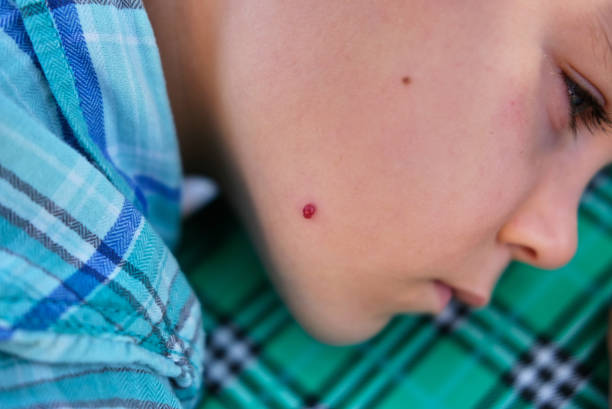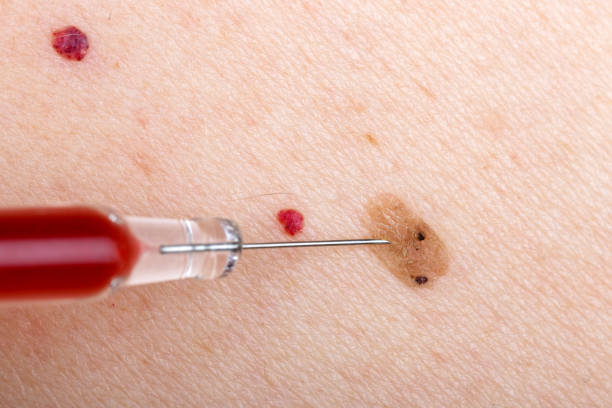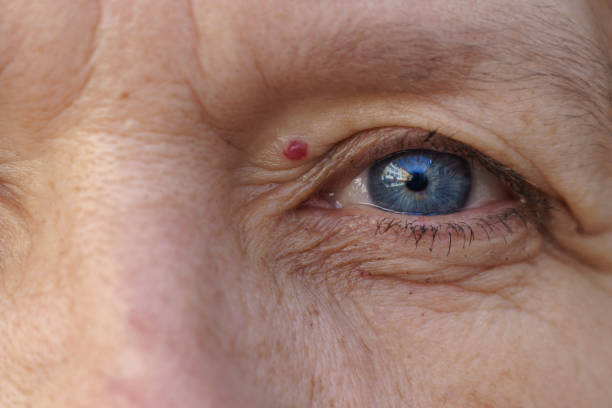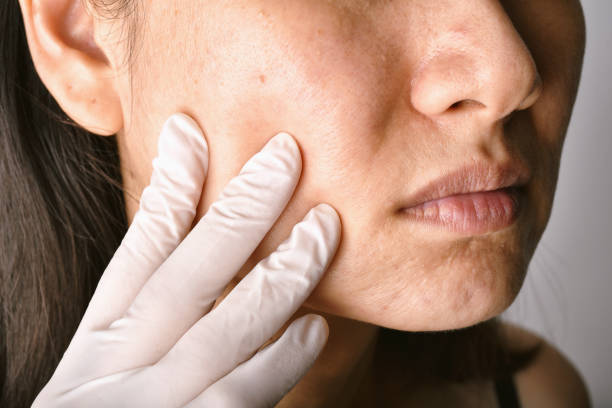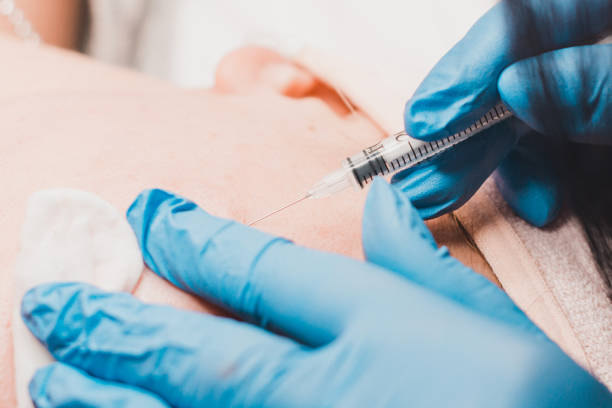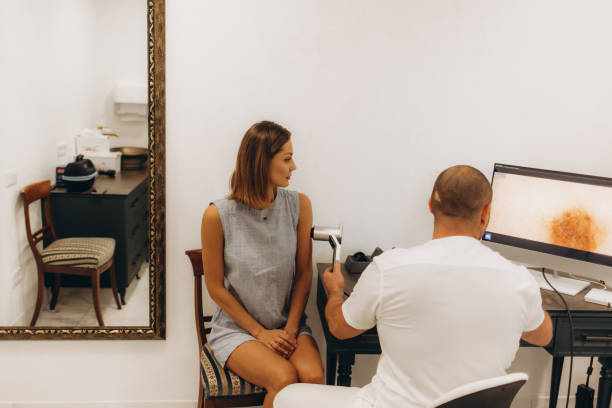Do You Need a Skin Tag Removal Doctor? When to See a Specialist | Revitalise London
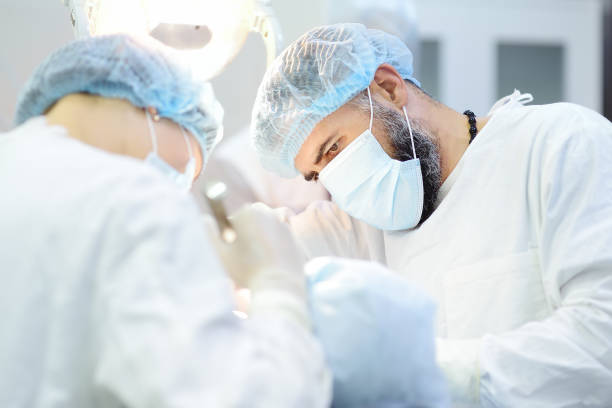
Skin tags are harmless growths that can appear anywhere on the body—especially on the face, neck, and underarms—but can be safely removed by a qualified Skin Tag Removal Surgeon. Most of them are not threatening to your health. However, people sometimes choose to remove them because of cosmetic or discomfort issues. For skin tag removal, it is best to consult a dermatologist or a surgeon experienced in skin tag removal to ensure the procedure is safe and effective.
A skin tag removal surgeon is dedicated to removing skin tags accurately and safely. At-home remedies and over-the-counter treatments have a dark side, including the risk of infection, scarring, or incomplete removal of the condition. You should definitely go to a qualified surgeon who can provide a safe, sterile environment and choose the best way to remove it, such as with excision, cryotherapy, or cauterisation.
Picking a good skin tag removal surgeon is the best option, as it minimises the risk of complications. In this article, we will discuss the benefits of seeking professional help for skin tag removal, what to expect during the procedure, and how to select the right surgeon for you. Now, we will learn why hiring a professional to remove skin tags is the safest way to do so.
Why Choose a Skin Tag Removal Surgeon?
When there are many options for skin tag removal, it’s one of the best decisions you can make in case there are any complications. Sometimes skin conditions require special care and expertise, and surgeons utilise the knowledge and care with which they are trained. For delicate areas, such as the face and other sensitive parts, this is particularly important.
Expert Knowledge and Precision
A skin tag removal surgeon possesses the expertise to identify and remove skin tags using specialised medical-grade tools accurately. They are familiar with the skin's anatomy, enabling the procedure to be performed with the highest level of precision. By doing this, the risk of complications, such as scarring or infection, is reduced, which can occur when using DIY treatments or undergoing a non-professional procedure.
Minimise Risk of Complications
Skin tag removal surgeons can ideally minimise the risks of removal. A skin tag removal surgeon can perform skin tag removal surgery, regardless of the size or location of the skin tags, or if there is a possibility of other health concerns. They can also customise the treatment according to your needs and give the best result.
Get Long-term Results By Skin Tag Removal Surgeon
In skin tag removal surgery, you’re giving yourself a long-term result. The professional removal ensures that all skin tags are completely removed, thereby reducing the likelihood of them regrowing. In addition, post-removal care is performed very carefully to minimise the risk of complications and promote intense healing.
Why Choose a Skin Tag Removal Surgeon Over Home Treatments?
1. Risk of Infection with Home Treatment
Home treatments for skin tag removal are often “sold” as easy and inexpensive, but the risks are significant. Infection is one of the most common risks. Some skin tags can be cut or tied off at home. However, this could result in open wounds. In most cases, these wounds are prone to infection unless they are properly sterilised. The risk of complications affecting your health is increased without the help of a professional.
2. Precision and Expertise of a Skin Tag Removal Surgeon
A skin tag removal surgeon knows how to evaluate the size, site, and type of skin tag and will choose the most suitable removal method, depending on the individual case. A surgeon is far less likely to leave behind tissue that could grow back or create an uneven skin surface when performing surgery. Excision or cryotherapy is a professional procedure that eliminates the skin tag to minimise the risk of scarring and maintain a clean result.
3. Safe Removal of Sensitive Areas
Certain areas need special care when it comes to skin tag removal, such as the face, eyelids or groin. The removal of these delicate areas can also lead to scarring and should be performed by someone with expertise to prevent long-term damage. A skin tag removal surgeon possesses the necessary skills to perform this procedure on these areas with a minimal risk of any damage.
4. Post-Procedure Care and Recovery
Professional skin tag removal is a procedure that requires aftercare instructions from a surgeon, as well as follow-up visits to ensure healing is progressing well. It decreases the anxiety and gives the most successful outcome, and also peace of mind knowing that the procedure was done right and safely. However, there is no such backing or assurance when using DIY methods, and this may cause additional problems.
Finding The Skin Tag Removal Surgeon You Will Be Hiring
1. Certifications and Qualifications
When choosing a skin tag removal surgeon, it is crucial to verify that they are certified to perform the procedure. Board-certified surgeons are those who have undergone rigorous training and are recognised by reputable medical boards. Before proceeding with any treatment, always check the surgeon’s credentials. However, to ensure the surgeon adheres to high medical standards, it is essential to obtain certification from a recognised professional body.
2. Experience and Specialisation
The effectiveness of skin tag removal largely depends on the practitioner's experience. The surgeon will be experienced in removing skin tags and will not hesitate to address complications and other skin conditions that may arise during the procedure. Furthermore, choose a surgeon who specialises in dermatology or cosmetic surgery, rather than one who does not.
3. Patient Reviews and Testimonials
Patient reviews are beneficial for learning about the surgeon's capabilities. The surgeon can provide positive testimonials from previous patients who have undergone successful and safe procedures. Check for reviews that specifically refer to skin tag removal including professionalism, care, and the result of the treatment.
4. Quality of Equipment and Facility
Crucial in the equation are the technology and equipment used by the surgeon. They should also work in a well-equipped, sterile environment. You should also verify that the clinic adheres to the highest standards of hygiene and that the surgeon employs modern techniques and tools that promote precision and minimise scarring. It minimises the chance of infection and speeds up recovery time.
5. Skin Tag Removal Surgeon Consultation and Communication
Good communication is vital. A professional skin tag removal surgeon will inform you about the procedure during a consultation, answer all your queries and give you an idea of the results to expect. The surgeon needs to explain the process in detail and listen to what is essential to you. Before you move on, you should have a comfort zone where you can ask questions and have all your doubts cleared.
Skin Tag Removal Surgeon for Sensitive Areas
1. How Specialised Care is Important for the Sensitive Areas
However, because there is a delicate area that may require skin tag removal, it is essential to have an experienced skin tag removal surgeon. As these areas have thinner, more sensitive skin, it requires a specialist to perform the procedure both safely and effectively. The tissue around the treatment area is carefully protected in these regions, reducing the risk of scarring and enabling you to achieve the best possible results without damaging the surrounding tissues.
2. Experienced Surgeons for Facial Skin Tag Removal
Since facial skin tags can be particularly challenging to remove, the skin on the face is more susceptible to sun damage, which may result in scarring. Using advanced techniques, a trained skin tag removal surgeon will be able to minimise any visible scarring. Facial skin tag removal techniques employed by these surgeons include cryotherapy, laser removal, and excision, all of which are suitable for facial skin tag removal, preserving the natural skin texture.
3. Eyelid Skin Tag Removal Surgeon: A Sensitive and Detailed Procedure
Eyelid skin tag removal needs a surgeon with excellent expertise. The eyelids are exceptionally delicate, and the improper removal can result in infection or scarring that may affect your vision. An experienced skin tag removal surgeon will know the correct way to perform an eyelid procedure with the use of precision tools to remove skin tags without injuring the susceptible skin or eye area in any way. This area of treatment is often preferred to be non-invasive, allowing for precision and minimal recovery time, which can be achieved with laser treatments.
4. Groin Skin Tag Removal: Addressing Comfort and Confidentiality
Another sensitive region where one should be discreet, skilled and careful with skin tag removal is the groin area. Irritation in this area can be a problem, so it’s essential to find a skin tag removal surgeon who is experienced in dealing with this area. The procedure is performed with minimal discomfort and maintains the patient’s privacy and dignity due to surgeons specialising in this field. These surgeons have been using gentle and effective methods to facilitate a quick and smooth recovery, with minimal scarring in intimate areas.
5. Minimising Scarring in Delicate Areas
One of the most important things that a skin tag removal surgeon should do in all sensitive areas is to minimise scarring to a minimum. Experienced surgeons know how to use techniques that help with healing and minimise scarring. Laser removal, cryotherapy, or surgical excision can be chosen depending on the surgeon you select, who has the necessary expertise in delicate areas to ensure the skin heals without any marks. Furthermore, a good surgeon will also provide clear post-care instructions, which further decrease the risk of scarring and facilitate a faster recovery.
What to Expect During and After the Procedure
1. Before the Procedure: Initial Consultation and Preparation
The first step in removing a skin tag is to consult a qualified skin tag removal surgeon. It is doubtful that the surgeon can remove skin tags by simply cutting and treating them in this appointment. They will discuss the various available removal options, such as laser removal, cryotherapy, or excision, and determine which one is best for you based on your skin type and the region to be removed.
The surgeon will also provide specific instructions before the treatment to help prepare you for it. It may involve not taking certain medications, stopping the use of skin lotions and creams, or refraining from smoking to promote healing. Sometimes you will be offered a topical anaesthetic to numb the area before the procedure starts.
2. During the Procedure: A Step-by-Step Breakdown
The steps of the procedure will differ depending on the method of removal chosen, but generally speaking, they all include the following:
Procedure: We will apply a local anaesthetic to the area of the procedure to keep you comfortable and pain-free during the procedure.
Skin Tag Removal: After the surgeon has chosen the method for removing the skin tag, it will be safely removed. If laser removal is desired, a powerful laser will be used to direct at the skin tag and cut it away. If cryotherapy is done, the surgeon will freeze the skin tag with liquid nitrogen until it falls off. The skin tag is carefully removed from the skin using a sterile scalpel for excision.
Post-Procedure Care: The surgeon will clean the area and apply a dressing or bandage to the site after removing the skin tag. They may also give further instructions for caring for the site if necessary.
3. After the Procedure: Recovery and Aftercare
As for the procedure, you may experience swelling, redness, and discomfort, none of which is considered abnormal. Recovery time depends on which removal method is used. Recovery from laser or cryotherapy is usually a lot shorter than surgical excision.
The aftercare instructions are critical in a smooth recovery and to prevent complications. After the skin tag removal, your surgeon will probably advise you not to touch or scratch the treated area, apply any prescribed ointments, and keep the area clean and dry. You may also be asked to avoid activities like exercise or swimming for a few days, depending on where the removal is taken from.
4. Possible Side Effects and Complications
Since skin tag removal is generally a safe procedure, and side effects are rare. These may include:
Scarring: Even though skilled surgeons will use their skill to save as little scarring as possible, sometimes the result is a small scar, particularly after excision. This, though, will generally fade over time.
It can become infected if it is not adequately dressed. Close adherence to aftercare instructions will minimise this risk.
Rarely, the skin around the removal site may be lighter or darker. This is usually temporary, and it will resolve within a few weeks.
If you encounter any unusual changes or experience excessive pain, please contact your skin tag removal surgeon immediately.
5. Follow-Up Visits
After a surgical excision, follow-up visits to your surgeon may be necessary. During these visits, the surgeon checks on the healing process, removes any remaining stitches, and ensures that the site is healing properly. Follow-up visits after non-surgical methods like cryotherapy or laser removal may not be needed. The surgeon will still follow up with you.
Trusted Skin Tag Removal Surgeons in the UK | Revitalise London
The most important things when it comes to skin tag removal are trust, expertise, and precision. Revitalise London prides itself on providing the highest standard of care to our patients. Our skin tag removal doctors are highly qualified and certified professionals with extensive experience in performing safe and effective treatments.

Expert Surgeons with a Patient-Centred Approach
When working with our skin tag removal surgeons at Revitalise London, we focus on your individual needs and deliver the best possible results. Our surgeons utilise state-of-the-art techniques to remove skin tags from all areas of the body, whether you want to remove skin tags from the face, armpits, or other areas more commonly affected.
Every patient is different, so with our personalised consultations, we will provide you with the best advice and the most appropriate treatment. The surgeons take their time to hear about your concerns, explain the procedure and answer any questions you might have. Revitalise London will give you the feeling of knowing you're in the right hands.
State-of-the-Art Facilities and Cutting-Edge Techniques
We are based at Revitalise London, a place that aims to offer a safe and comfortable environment for our patients. We offer our clinics with the best equipment for practising non-invasive procedures, including cryotherapy, laser therapy, and traditional surgical methods. With these modern techniques, you can be assured that your skin tag removal will be both practical and comfortable.
Hygiene is one of our clinic’s main safety practices. We maintain the highest standards for cleanliness and infection control, and we do not compromise on patient safety. You can have confidence that all the work carried out at Revitalise London during your skin tag removal journey will be done with the utmost attention and care.
Proven Success and Patient Satisfaction
The evidence is clear in the results of skin tag removal at Revitalise London. We provide excellent care, results and patient experience, and our patients leave satisfied every time. We achieve a high rate of success in removing skin tags, and our surgeons have extensive experience with scar-free treatments.
Our reputation for delivering safe, effective, and reliable treatments has earned the trust of our patients, who trust us. They know they will always receive the same exceptional care here, and many return to us for other dermatological needs.
At Revitalise London, we focus on long-term results and overall well-being. We will provide the best solution for you, whether you have a few skin tags or a much larger area to treat.



